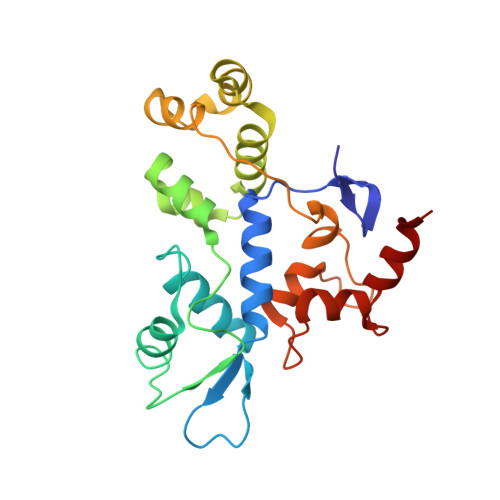High-fidelity, hyper-accurate, and evolved mutants rewire atomic-level communication in CRISPR-Cas9.
Skeens, E., Sinha, S., Ahsan, M., D'Ordine, A.M., Jogl, G., Palermo, G., Lisi, G.P.(2024) Sci Adv 10: eadl1045-eadl1045
- PubMed: 38446895
- DOI: https://doi.org/10.1126/sciadv.adl1045
- Primary Citation of Related Structures:
8SCA - PubMed Abstract:
The high-fidelity (HF1), hyper-accurate (Hypa), and evolved (Evo) variants of the CRISPR-associated protein 9 (Cas9) endonuclease are critical tools to mitigate off-target effects in the application of CRISPR-Cas9 technology. The mechanisms by which mutations in recognition subdomain 3 (Rec3) mediate specificity in these variants are poorly understood. Here, solution nuclear magnetic resonance and molecular dynamics simulations establish the structural and dynamic effects of high-specificity mutations in Rec3, and how they propagate the allosteric signal of Cas9. We reveal conserved structural changes and dynamic differences at regions of Rec3 that interface with the RNA:DNA hybrid, transducing chemical signals from Rec3 to the catalytic His-Asn-His (HNH) domain. The variants remodel the communication sourcing from the Rec3 α helix 37, previously shown to sense target DNA complementarity, either directly or allosterically. This mechanism increases communication between the DNA mismatch recognition helix and the HNH active site, shedding light on the structure and dynamics underlying Cas9 specificity and providing insight for future engineering principles.
Organizational Affiliation:
Department of Molecular Biology, Cell Biology and Biochemistry, Brown University, Providence, RI, USA.















